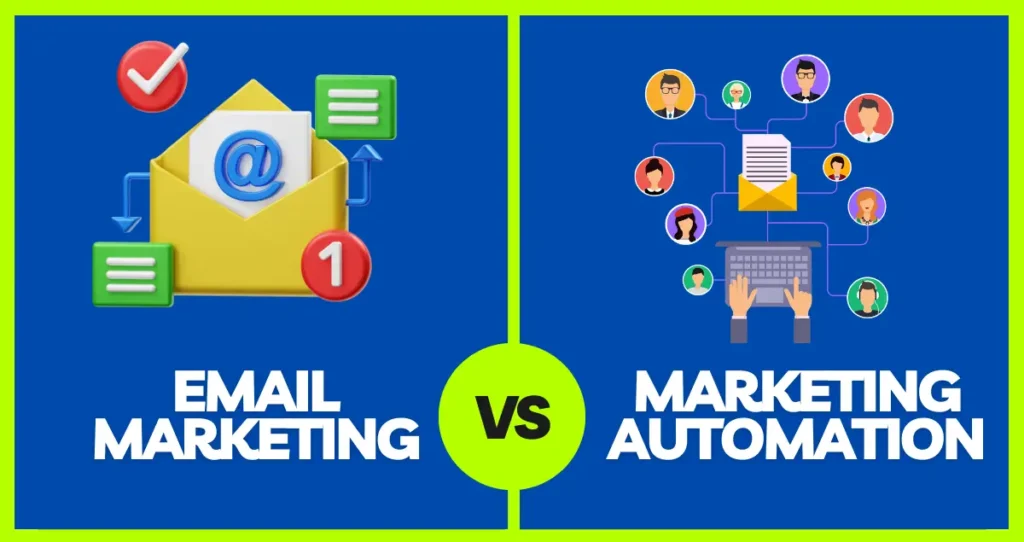SEO (Search Engine Optimization) is your website’s ultimate partner in the digital arena. It seems like a no-hidden weapon for a digital marketer who wants to see his/her business to novel heights. And yes it’ll make no sense how best your services or products are unless the target customers can’t find them online. So, if entrepreneurs want to expand themselves into multilingual markets they need to implement SEO Localization and make their content more persuasive.
So, read this blog further and learn how you can grow your business internationally and be on the first page of Google; hop on to SEO localization technique as it helps you get recognized.
Key Takeaways
- SEO localization entails modifying material to resonate with local audiences, taking cultural subtleties into account, and responding to different search patterns.
- Mastering local SEO necessitates a complete plan that includes everything from keyword research and on-page optimization to URL structure and localized content generation.
- Building local backlinks and keeping correct citations across internet directories promote credibility, raise local SEO exposure, and generate meaningful relationships.
What is SEO Localization?
SEO localization is easing regional marketing via organic search results to boost visibility. And, although local consumers will have a more comfortable, native user experience if your material isn’t revealed in their internet searches, very few new customers will find your website readily.
Moreover, SEO localization isn’t just about translating your website content; it also entails customization of content so it reaches to targeted audience and ensures cultural adaptation and search preferences.
SEO localization carters optimizing the target keywords, content quality, meta tags, URLs, external/internal links, image alt text, and more. This doesn’t just end here, it also includes regionally pertinent pictures, currency preferences, and local metaphors and idioms.
Key Elements of SEO Localization
To win new markets, the undertones of SEO localization are paramount for a successful local online presence. Have a look at the components of SEO localization just to make sure that your brand; ‘s website resonates local audience.
Keyword Research for Local Markets
By streamlining your content with localized keywords, you not only improve your search engine rankings but also speak the language of your clients.
Thus, it becomes critical to produce an SEO-optimized lexicon for optimal translation and increased local online presence. For this, you need to create a list of source text keywords, including product/service specifics and brand-related terms, before you begin translating.
Add definitions for each keyword to provide context. Now you’ve to translate this list with the assistance of a regional SEO expert. The purpose of this whole exercise is to offer alternatives to translators and allow them to smooth the inclusion of keywords into translated material. This proactive approach boosts global and obviously regional SEO campaigns.
On-Page Optimization for Local SEO
For On-page optimization website structure should be optimized i.e., the language and region of your website should indicate that your website’s service and products are serving and viewed by the right audience.
Furthermore, on-page optimization includes hreflang tags that will tell search engines in what language your website is in. Wondering what is Hreflang? Well, Hreflang attributes are HTML elements that assist search engines in recognizing the language and intended area of a page. They notify search engines and browsers which version of a website to provide for a certain country or language.
Importance of URL Structure and Keyword Inclusion
In SEO localization URL structure and keyword, insertion plays a significant impact on the visibility of local searches. What is the strategic move that boosts your website recognition to the targeted audience? Well, it will be incorporating relevant keywords.
If your website URL is fully optimized, Google search engines will comprehend the content’s context and provide a clear outcome to the audience. Through on-page optimization, your website will be fully aligned with the local market and this strategy will get your site on the first three pages of Google.
Creating and Optimizing Localized Content
By effectively reaching a targeted audience and crafting a solid online brand presence you’re marking content localization’s primary goal. This process is daunting but by applying the right approach you’ll see results in a very short period. First, you need to research your audience preferences and needs key trends of the area, local customs, rituals, language use, etc. Second, you need to translate your research content into the local language by using software or a translation management system (TMS).
Third, fix the translated content as the customs and cultural adaptations. Fourth, right before launching scan issues to avoid bad user experience. Last, but not least, go for some digital marketing platforms and other social media handles to promote your website.
Local Citations and Online Directories
You know what, local citations are precisely what your business needs for a growth boost, and as per the research, 86% of customers seek a local business. So, why local citations are important?
Basically, local citations are internet listings that provide information about your business and are essential for local SEO ranking. For instance, platforms like Google My Business help you improve your local SEO visibility. The citations collected on sites such as social media and Yelp assist Google Maps in ranking your website at the top of the page.
The instant impact may be little, but trustworthy citations boost your reliability in the eyes of Google’s algorithm. So, you’ve to maintain a proper NAP (Name, Address, Phone Number) across the internet, because Google utilizes it to confirm the validity of your business. Yes, it is. Quality citations are required for successful localized backlinks and a favorable internet presence.
Link Building for Local SEO
Consumers today prioritize connecting with local businesses to foster personalized interactions that go beyond transactions. For further proof, this research says Google reports a 500% year-on-year increase in searches containing the phrase “near me.”
So, link building is getting localized backlinks from other websites just to drive traffic to your site. This implies obtaining backlinks from relevant local companies to boost recognition in regional marketing results.
Whenever Google evaluates your page rank it analyzes the amount and quality of backlinks, which is critical for ranking on top of page. Local link development also targets specialized, high-quality visitors, improving the chances of meaningful interactions and sales.
P.S. it helps in brand visibility, which aligns with the marketing “Rule of 7,” according to which increasing brand impressions leads to action.
Utilizing Schema Markup and Structured Data
In the world of organic search, schema markup is a trendsetter for local companies. It goes beyond usual SEO aspects, giving you a competitive advantage by assisting search crawlers in understanding landing sites and showing relevant information in SERPs.
Google emphasizes the use of schema in increasing the efficiency of search crawlers. Rich snippets become a significant tool when schema markup is defined as a technique to mark up distinct content kinds for simple comprehension by search engines. Major search engines work together through schema.org to provide consistent and user-friendly rich snippets.
Schema integration provides considerable benefits, with studies indicating up to a 30% rise in organic traffic and a large increase in click-through rates, making it a vital approach for local SEO success.
Leveraging Social Media for Local SEO
You can boost your online presence and get higher ranks in SERPs by effectively incorporating social media sites like Facebook, Instagram, Twitter, and LinkedIn into your SEO plan. Use these platforms to distribute SEO-friendly stuff, interact with local audiences, and generate quality yet localized backlinks.
You can use hashtags, appealing pictures, and targeted subtitles to promote your content and encourage user-generated stuff to boost credibility. For ultimate local SEO impact, use geo-targeting, local hashtags, and location-based targeting capabilities. Also, to upgrade your local ties do local audience engagement by influencers, respond to consumer queries, and promote events.
Each channel is for professional networking, profile optimization, joining local groups, and creating local-focused content. Adopt these strategies to boost your website’s performance, attract more consumers, and support long-term business success across a variety of digital landscapes.
Tracking and Measuring Local SEO Performance
Many Local companies who want to improve their online presence must use strong local SEO methods. It includes major Key Performance Indicators (KPIs) used for measuring the efficacy of these initiatives.
First is conversions, which include sales and leads, which are the most important key performance indicators, directly linking SEO effectiveness to business profitability. Second is client Lifetime Value (CLV) predicts long-term profit from client connections, allowing firms to improve strategy by dividing consumers into tiers based on CLV.
Third, Cost Per Acquisition (CPA) has become an important measure in local SEO operations, providing insights into the effectiveness of gaining and converting consumers. While quantifying ROI for SEO is difficult owing to its long-term impact, it gives a thorough indicator of overall strategy performance. Fourth is organic visibility, as measured by impressions and search ranks, which is directly proportional to local SEO efforts.
P.S. Monitoring Organic Sessions and the gap between Branded vs. Non-Branded Traffic can provide insights into the true impact of SEO on website traffic and user behavior.
Fifth, keyword rankings that offer granular information into the efficacy of local SEO initiatives. Google Business Profile Metrics, such as searches, views, and clicks, are critical for developing a strong local internet presence for local businesses. Sixth is localized backlinks, which indicate the quality and amount of links pointing to a site, and continue to be a top-ranking criterion.
Seventh is monitoring Organic Click-Through Rate (CTR) and User Engagement Metrics, such as bounce rate and average engagement duration, which yields critical insights into user interaction and content performance in local SEO.
So, yes tracking these SEO KPIs regularly is critical for informed decision-making and continuing optimization, assuring long-term business success in the local landscape.
Conclusion
In international marketplaces, mastering the art of SEO localization is a continuous and dynamic process. Your capacity to modify and develop your SEO localization approach over time will determine your worldwide success. In regional marketing, it becomes increasingly important to ensure that your website is properly calibrated for foreign consumers.
By incorporating SEO translation effortlessly, you enable your website to flourish in foreign search results, unleashing a plethora of new prospects. The key is to take a planned strategy and to use the appropriate tools. Thus, SEO localization is your compass in the global digital sphere, directing you to international excellence and renown. So, set off on this road with accuracy, flexibility, and a determination to keep ahead of the ever-changing world of SEO.







